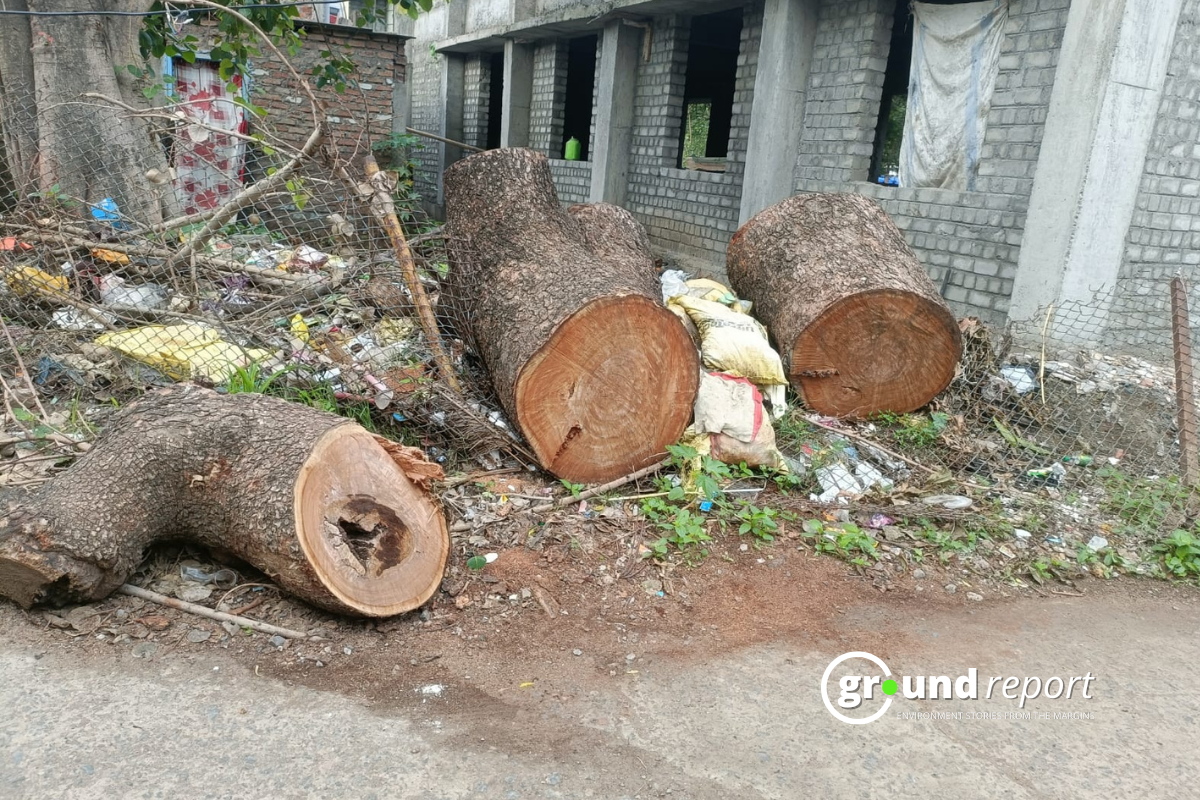While the nation applauds Indore for its said world record of planting 11 lakh saplings in a day and achieving a target of planting 51 lakh trees, Experts not only question the exaggerated numbers claimed but also the efforts made to publicise the campaign. Union Home Minister and Minister of Cooperation Shri Amit Shah also planted saplings in a program under the ‘Ek Ped Maa Ke Naam’ this Sunday.

Sandeep Khanwalkar, a natural resource management expert based in Indore believes the plantation drive and awareness can be considered a positive step but at what cost it comes up should be answered. He questions the lack of mapping of these planted saplings to reaffirm the number of 51 lakh, as he explains it would require a land of approximately 5500 acres to plant these many trees.

“There have been instances of tree cutting at Khandwa road, Kesari Bagh, Malhar Ashram and other places in Indore recently, we cannot ignore the rampant cutting of trees,” he told Ground Report.
Threat to forest cover
Last year in December, Prime Minister Narendra Modi virtually distributed the due worth of Rs.224 crore to the workers of Hukumchand mill. The mill was abruptly closed in 1992 as a result of financial difficulties. Approximately 5,000 individuals were left without jobs and without pay as a result.
Khanwalkar informed that to pay the dues, the government has sold the 42 acres of land to the housing board where right now a mini forest exists that works as an oxygen zone for the entire city. He said,
“People of the city should actively come together to safeguard this forest. Plantation drives are only beneficial when you first protect the trees that already exist.”
A recent news report also highlighted the risk of losing around 80,000 trees for a railway project between Patalpani to Mukhtiyara.
Shivaji Mohite is a social activist who works under Abhyas Mandal to rejuvenate the Kanh River in Indore. He is also creating awareness among the people on the threats to 2,000 trees in the Hukumchand mill area.
“This plantation advertising is just to divert the attention from the massive cutting of trees across the city,” he informed.
Many trees in different parts of the city are also being translocated, which shows a poor survival rate. In the last 5 months, approximately three thousand trees were translocated and nearly half of them have dried up. Ground Report has earlier reported on the failures of translocation of trees in Indore.
“The method used to translocate the trees is unscientific, no expert opinion or guidance has been taken to ensure the trees survive,” observed Dr O P Joshi, an environmentalist.
Last month, Member of the Madhya Pradesh Legislative Assembly Kailash Vijayvargiya in a statement said,
“Vikas bhi jaruri hai aur ped bh jaruri hai, jo ped vikas ke raaste mein aayenge unhe hum transfer karenge.”
However, the lack of success in translocation indicates it is not a feasible solution. Dr. Joshi emphasised proper marking around the trees which is crucial to understanding the root structure, the systematic uprooting and the month and weather feasibility that is important for a plant to survive after translocation.

Need for legal protection
He also raised concerns over the lack of strict laws against the cutting of trees. The offenders in Madhya Pradesh are charged a maximum amount of just Rs.5000 per tree. Generally, the fine imposed is decided by the Tree Officer having jurisdiction over concerning urban areas. Madhya Pradesh Vrikshon Ka Parirakshan (Nagariya Kshetra) Adhiniyam, 2001 defines the guidelines for permissions and punishments of tree cutting.
“Most of the legal framework levy a certain minimal amount of fine or maximum of 6 months of imprisonment, however, that does not compensate for the loss of the biodiversity,” Khanwalkar added.
According to the National Green Tribunal, the country’s top environmental court, the Environment Protection Act of 1986 and the Forest (Conservation) Act of 1980, two significant environmental laws in India, are being violated. The tribunal has taken suo motu cognisance of the loss of almost 6 million trees throughout India’s farmland tracts.
A research that was published on May 15 in the journal Nature Sustainability revealed that India had lost an astounding 5.6 million big trees in agricultural areas all throughout the nation. Furthermore, this “vanishing,” as the scientists who investigated it refer to it, happened between 2018 and 2022—a very brief period of time.
As a result, on July 4, the NGT sent notifications for responses to the state forest departments of Maharashtra, Telangana, and Madhya Pradesh (especially in Indore) as well as the union environment ministry. The case’s subsequent hearing has been set for July 31.
A Supreme Court judgment also mentions that “any area that meets the dictionary meaning of a forest should be considered a forest and protected under the FCA of 1980 – even if it is not officially recorded as a forest.”
“A strong legal protection and awareness of these laws is also important to save our urban areas from deforestation,” Dr. Joshi added.
Keep Reading
Part 1: Cloudburst in Ganderbal’s Padabal village & unfulfilled promises
India braces for intense 2024 monsoon amid recent deadly weather trends
Support us to keep independent environmental journalism alive in India.
Follow Ground Report on X, Instagram and Facebook for environmental and underreported stories from the margins. Give us feedback on our email id greport2018@gmail.com.
Don’t forget to Subscribe to our weekly newsletter, Join our community on WhatsApp, and Follow our YouTube Channel for video stories.







